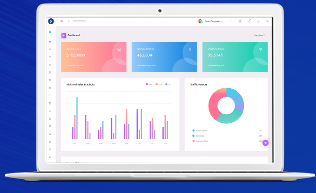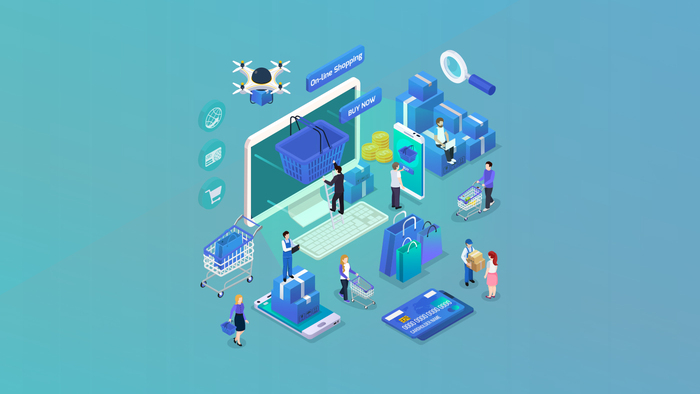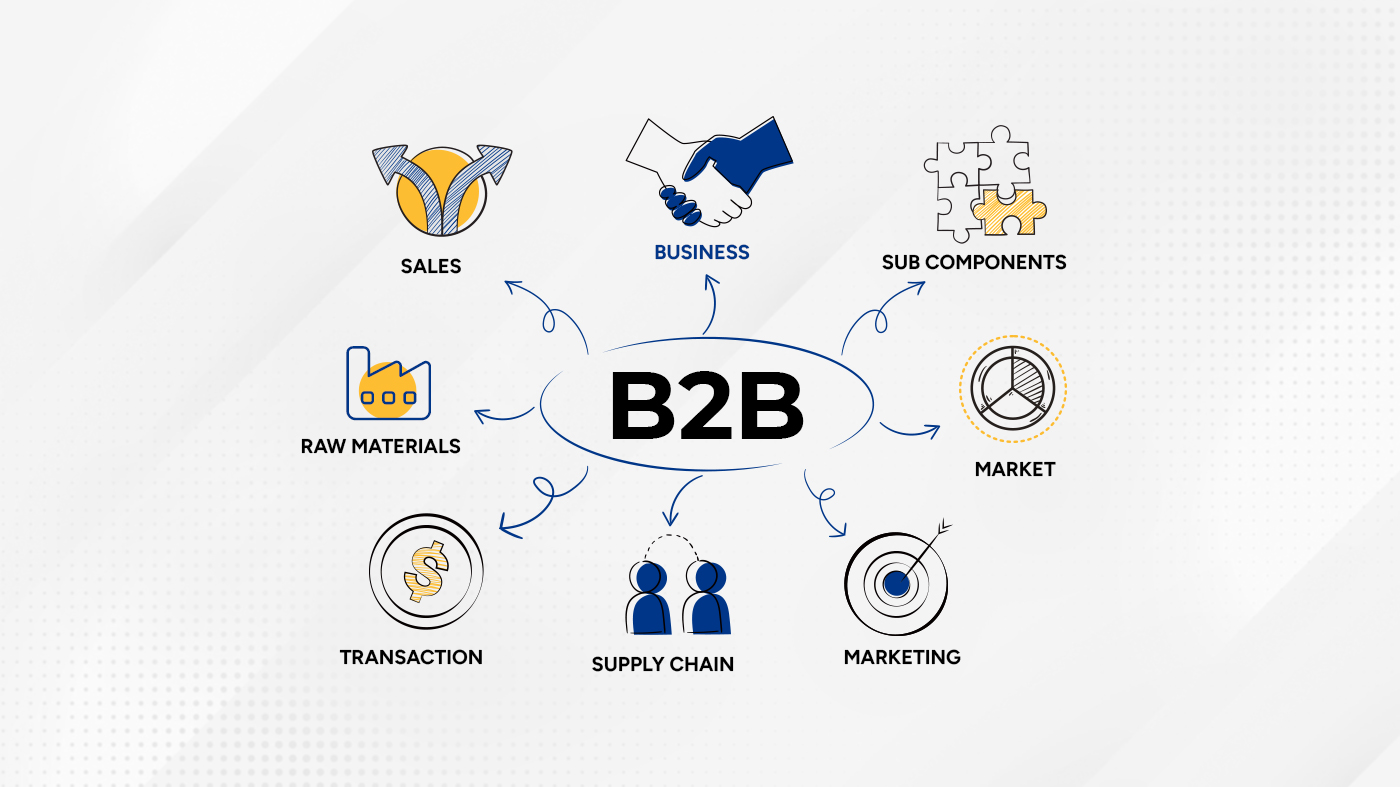Ready to drive in?
Schedule a demo
In the current commerce market, customers are hungry about the product information when making buying decisions. Thus, it becomes important to provide a better and accurate product information to your customers.


16-January-2025

21 min read
The Ultimate Guide to B2B Email Order Automation: Transforming Business Operations in 2025
Managing email orders manually in 2025 is like trying to stream a movie on dial-up internet—it’s slow, frustrating, and completely out of place in today’s fast-paced digital world. With businesses moving at breakneck speed, staying ahead requires precision, speed, and the right tech tools. Enter B2B email order automation—the ultimate game-changer for your operations. This isn’t just about trimming time off tasks (though it does that brilliantly); it’s about revolutionizing how you handle orders with accuracy, scalability, and a touch of futuristic flair.
Let’s dive into this guide and discover how to turn email order chaos into smooth workflows that impress customers and drive efficiency. Buckle up for a witty, insightful look into the world of automation—and why it’s your must-have tool in 2025.
What is B2B Email Order Automation and Why Does It Matter in 2025?
Imagine your sales team drowning in email orders, frantically juggling spreadsheets, and deciphering incomplete customer requests. It’s a recipe for stress and inefficiency. Now, picture a system that processes these orders automatically, sends timely updates, and reduces errors—all while your team focuses on strategic goals. That’s B2B email order automation in action.
In essence, it’s about using technology to automate email-based order processing, confirmations, and follow-ups. Automation eliminates the manual grind, ensuring faster, more accurate order management.
By 2025, as businesses face mounting pressure to deliver speed and accuracy, automation isn’t just a perk—it’s a necessity. According to a Salesforce study, 91% of B2B buyers expect companies to provide fast, seamless purchasing experiences, and automation is the key to delivering exactly that.
Why Automation is the Backbone of Modern B2B Operations
Picture this: your sales team buried under a mountain of emails, manually tracking orders, deciphering customer requests, and trying to meet tight deadlines. Sounds familiar? Now imagine replacing that chaos with a streamlined, automated system that handles everything—from order confirmations to follow-ups—without breaking a sweat. That\u2019s the power of B2B email order automation.
Simply put, B2B email order automation leverages technology to manage email-based order processes efficiently. It eliminates the need for manual intervention, reducing errors and improving speed. But in 2025, it is more than just a convenience, it’s a competitive necessity. With digital transformation becoming the norm, automation is the secret sauce for businesses to keep pace with growing customer demands and market dynamics.
B2B email order automation refers to the use of automated systems to manage email-based order processing, confirmations, and follow-ups. Unlike manual processes, automation ensures faster, more accurate, and scalable order management. In 2025, as digital transformation accelerates, automation is no longer a luxury but a necessity for businesses aiming to remain competitive.
Why Does It Matter?
Streamlined Processes for Error-Free Operations
Let’s face it: human error happens. Manual data entry often leads to misplaced orders or incorrect details. Automation swoops in to save the day, reducing these errors by as much as 90% (Deloitte). That means fewer headaches for your team and happier customers.
Time is Money—Save Both
Handling repetitive tasks like order acknowledgments and updates eats into valuable hours. Automation frees up your team to focus on strategy and innovation. McKinsey reports that automating repetitive tasks can save employees up to 30% of their time—time better spent on scaling your business.
Customer Expectations? Exceeded.
In a world where instant gratification is the norm, automation ensures your customers get quick responses and real-time updates. Zendesk’s research shows that proactive communication improves customer satisfaction rates by 20%. Automated systems don’t just meet expectations—they set new ones.
Effortless Scalability
Automation is like your favorite stretchy jeans—it grows with you. Whether you’re managing 100 orders a day or 10,000, automation handles it without breaking a sweat. It’s the perfect solution for businesses looking to scale without adding manpower.
Audit-Ready Compliance
Maintaining compliance can be a logistical nightmare, but automation simplifies it. Accurate record-keeping and adherence to industry standards become second nature with automated systems, making audits a breeze.
Reduced Manual Errors
Automation minimizes human error, ensuring accurate order data entry, validation, and processing. This not only reduces costly mistakes but also strengthens customer trust.
Enhanced Customer Satisfaction
Customers expect quick responses and seamless service. Automated systems deliver instant confirmations, proactive updates, and timely follow-ups, creating a superior customer experience.
Improved Decision-Making with Data
Automation tools often come with analytics and reporting capabilities, providing valuable insights into order patterns, customer behaviour, and operational bottlenecks. These insights drive informed decision-making and better forecasting.
Faster Turnaround Times
Automated processes operate 24/7, ensuring orders are processed and confirmed even outside regular business hours. This is particularly valuable for global businesses managing orders across time zones.
Competitive Advantage
In a fast-paced market, the ability to process orders quickly and accurately sets you apart from competitors. Automation is a strategic asset that enhances your overall efficiency and customer retention.
Future-Proofing Your Business
As industries continue to evolve digitally, adopting automation prepares your business for emerging technologies and market trends. Staying ahead ensures long-term resilience and relevance.
The Features That Make Automation Tools Stand Out
When choosing a tool for email order automation, look for features that don’t just check boxes but truly revolutionize how you do business. Here’s what you should keep an eye out for:
Integration with ERP and OMS
Say goodbye to the copy-paste grind. A robust automation tool integrates seamlessly with your existing Enterprise Resource Planning (ERP) and Order Management System (OMS). This ensures real-time syncing of inventory, pricing, and order statuses, eliminating delays and discrepancies. Think of it as the ultimate matchmaker for your systems.
AI-Driven Personalization
Nobody wants to feel like just another line on a spreadsheet. AI-driven personalization tailors every email—from product recommendations to order updates—based on the customer’s history and preferences. It’s like having a personal shopper for your email communications.
Customizable Workflows
Let’s be real: no two businesses are alike. Customizable workflows let you design processes that align perfectly with your unique operations, whether it’s a multi-step approval process or a simple one-click order confirmation.
Analytics and Reporting
Numbers don’t lie. Advanced analytics give you insights into key metrics like order conversion rates, email engagement, and revenue impact. With detailed reporting, you’re not just tracking performance—you’re uncovering opportunities.
Multi-Language Support
Global business? No problem. Multi-language support ensures that your emails speak the language of your customers, literally. Localization isn’t just a nice-to-have; it’s a game-changer in international markets.
Scalability
What works for 100 orders today should work for 10,000 tomorrow. A scalable automation tool grows with your business, ensuring you’re always ready for peak seasons and expansion without breaking a sweat.
Real-Time Notifications
Keeping customers in the dark is a fast track to losing them. Real-time notifications keep everyone in the loop, whether it’s a confirmation email, shipping update, or stock availability alert. Transparency builds trust.
Data Security
In the age of cyber risks, data security is non-negotiable. Your automation tool should comply with global data protection standards like GDPR, ensuring sensitive customer and business information stays secure.
Mobile Accessibility
Who says you can’t manage orders from a beach chair? With mobile accessibility, your team can handle approvals, updates, and reports on the go. Flexibility has never looked so good.
Customer Support Integration
Why stop at email orders? Integration with CRM systems consolidates customer data, enabling you to deliver proactive support, resolve issues faster, and upsell smarter. It’s like having a 360-degree view of your customer relationships.
How Email Order Automation Delights Customers
Automation doesn’t just improve efficiency; it redefines the customer experience. Imagine placing an order and receiving an acknowledgment within seconds. Or being updated proactively about shipping delays before you even ask. These are the moments that build trust and loyalty.
Tailored emails that recommend products based on purchase history or offer personalized discounts make customers feel valued. According to McKinsey, businesses that excel in personalization see a 40% increase in revenue—a figure that’s hard to ignore.
Transparency also plays a big role. Automation keeps customers informed with real-time notifications, building confidence in your brand. Gartner predicts businesses prioritizing transparency through automation will see a 25% boost in customer loyalty by 2026.
Overcoming Automation Challenges Like a Pro
No great transformation comes without hurdles. Here’s how to tackle the common ones:
Email Deliverability Issues: Use verified domains and clean up outdated email lists to avoid spam folders. Verified domains can boost deliverability rates by 20%.
Resistance to Change: Ease your team into automation with clear communication, hands-on training, and a focus on how it enhances their roles rather than replacing them.
Data Chaos: Centralized platforms simplify data management, ensuring seamless integration between ERP, CRM, and OMS systems. Regular audits keep everything on track.
Security Concerns: Protect sensitive data with encryption and proactive security measures. The cost of a data breach averages $4.35 million (IBM), making prevention a top priority.
Real-Life ROI: Automation in Action
Overcoming Common Challenges in B2B Email Order Automation
Every revolution comes with its hurdles, and email order automation is no exception. Here’s how to navigate and overcome common challenges with flair:
1. The Deliverability Dilemma
You’ve crafted the perfect email, but what if it never lands in the inbox? Email deliverability can make or break your automation strategy. Industry data shows that 15% of emails worldwide never reach their intended recipient (Campaign Monitor). To tackle this:
- Use Verified Domains: Authenticate your sender identity using protocols like SPF, DKIM, and DMARC to increase trustworthiness.
- Clean Your Lists Regularly: Remove invalid addresses and disengaged contacts to improve your sender reputation.
- Engage Wisely: Overloading recipients with irrelevant emails can lead to spam complaints. Instead, focus on segmented and personalized campaigns.
2. Engagement Fatigue
Automation runs the risk of sounding robotic or overwhelming customers with too many emails. Avoid this trap by:
- Crafting Conversational Content: Make emails sound human and empathetic.
- Balancing Frequency: Ensure your automation cadence aligns with customer expectations and behavior.
- A/B Testing: Experiment with subject lines, timing, and calls-to-action to find what resonates best with your audience.
3. Data Chaos
Integrating multiple systems often leads to disjointed data flows, causing errors or delays. According to a Gartner report, poor data quality costs businesses an average of $15 million annually. Solve this by:
Integrating multiple systems often leads to disjointed data flows, causing errors or delays. According to a Gartner report, poor data quality costs businesses an average of $15 million annually. Solve this by:
- Investing in Centralized Platforms: Choose automation tools that integrate seamlessly with ERP, CRM, and OMS systems.
- Regular Audits: Periodically check for data inconsistencies and ensure accuracy across platforms.
- Leveraging AI: Use AI-powered tools to detect anomalies and predict trends in real time.
4. Resistance to Change
Team members may hesitate to adopt new technology, especially if they fear job redundancy. Overcome this through:
- Clear Communication: Highlight how automation enhances their roles rather than replaces them.
- Hands-On Training: Equip teams with the skills to master automation tools confidently.
- Celebrate Wins: Share success stories that demonstrate the tangible benefits of automation.
5. Security Concerns
In the era of cyberattacks, protecting sensitive customer and business data is paramount. Research by IBM shows the average cost of a data breach is $4.35 million. Mitigate risks by:
- Prioritizing Compliance: Adhere to data protection standards like GDPR and CCPA.
- Encrypting Communications: Ensure all email communications are encrypted to safeguard sensitive information.
- Regular Security Audits: Identify and address vulnerabilities proactively.
6. Measuring ROI
Without tangible metrics, it’s hard to justify the investment in automation. Define success by:
• Tracking Key Metrics: Monitor order accuracy, processing time, and customer satisfaction rates.
• Using Analytics: Leverage the built-in reporting tools of automation platforms to evaluate performance.
• Adapting Strategies: Use insights to refine your approach and maximize ROI.
Challenges may arise, but with strategic planning and proactive solutions, you can turn obstacles into opportunities. As Bill Gates wisely said, “Automation applied to an efficient operation will magnify the efficiency.” Ensure your efforts are amplified—not hindered—by addressing these challenges head-on.
The ROI of automation is undeniable. From reducing costs to enhancing customer experiences, it’s the key to unlocking sustainable business success.
The ROI of Automating Email Orders: Real-Life B2B Case Studies
The ROI of automating email orders goes far beyond numbers—it reflects transformed operations, improved customer satisfaction, and long-term growth. Let’s delve into real-life examples that showcase the power of automation.
Case Study 1: The Mid-Sized Distributor’s Transformation
A mid-sized distributor handling thousands of monthly email orders faced challenges with manual errors, slow processing times, and inconsistent customer experiences. After implementing an email order automation system, the results were game-changing:
• 30% Reduction in Manual Errors: By automating data entry, the company eliminated the inaccuracies that once plagued their order process. This translated to smoother workflows and fewer customer complaints.
• 25% Increase in Order Processing Speed: Automation ensured orders were acknowledged, validated, and processed in real time. The time saved allowed the company to focus on scaling its operations.
• 20% Boost in Customer Retention Rates: With faster responses and proactive communication, the distributor enhanced customer loyalty and satisfaction. A Forrester report reveals that 89% of customers are more likely to return to companies that provide consistent experiences—a testament to the distributor’s success.
Case Study 2: Scaling Efficiency for a Global Manufacturer
A global manufacturer operating across multiple regions struggled with fragmented order systems and communication gaps. Email order automation bridged these gaps and delivered significant ROI:
• $500,000 Annual Cost Savings: By reducing manual interventions and optimizing workflows, the manufacturer slashed operational costs.
• 40% Improvement in On-Time Deliveries: Automation enabled seamless order tracking and coordination across their supply chain, ensuring commitments were met.
• Enhanced Cross-Channel Integration: The system ensured consistency across emails, online portals, and marketplaces, which improved their brand reputation globally.
Statistical Highlights from the Industry
• Time Savings: According to McKinsey, automating repetitive tasks can save employees up to 30% of their workday, allowing them to focus on strategic initiatives.
• Error Reduction: Research from Deloitte shows that automation can reduce processing errors by up to 90%, enhancing data accuracy and reliability.
• Revenue Growth: A Gartner study found that businesses adopting automation experienced revenue growth rates 1.5 times higher than their peers.
Automation isn’t just a tool—it’s a competitive necessity in today’s fast-paced B2B landscape. It allows businesses to reallocate resources to innovation and growth.
How Email Order Automation Enhances B2B Customer Experiences
Faster Response Times
Automation ensures instant communication with customers by sending order confirmations the moment an order is placed. This rapid response reassures customers that their request has been received and is being processed without delay.
According to a study by Super Office, 46% of customers expect a response within four hours, while only 12% of companies meet this benchmark. Email order automation not only guarantees you exceed these expectations but also sets the tone for a professional and reliable customer experience.
Proactive Communication
Stay ahead of the curve by notifying customers about every significant update, whether it’s an order delay, stock replenishment, or shipping status. This proactive approach eliminates unnecessary anxiety on the customer’s end.
Research by Zendesk highlights that businesses practicing proactive communication see customer satisfaction rates improve by over 20%. By preempting queries and concerns, automation fosters trust and demonstrates that your business is always one step ahead.
Tailored Experiences
Modern customers expect more than generic emails. With AI-driven insights, email order automation can analyze purchase histories, preferences, and behavioral patterns to craft highly personalized communications. Imagine recommending complementary products or offering exclusive discounts tailored to a specific client’s buying habits.
McKinsey’s research shows that personalization can increase sales by 10% or more while significantly boosting customer retention rates. It’s not just about selling; it’s about making customers feel valued and understood.
Seamless Follow-Ups
One of the most overlooked aspects of order management is follow-ups. Whether it’s a pending payment reminder, an order approval nudge, or a reorder suggestion, automation ensures these critical communications are timely and efficient.
Forget the awkward “did you receive my email?” moments. A well-timed automated follow-up keeps the order pipeline moving smoothly, ensuring no opportunity is missed.
Transparency at Scale
In an age where customers demand transparency, real-time notifications about order progress, shipping updates, or potential issues build confidence. Automation enables businesses to provide this transparency effortlessly, keeping customers informed every step of the way.
Gartner predicts that by 2026, businesses prioritizing transparency through automation will see a 25% rise in customer loyalty. Transparency isn’t just a courtesy; it’s a competitive advantage.
Customer Empowerment
Empowering customers with the ability to track their orders independently is a game-changer. By integrating self-service portals with email automation, customers can view order statuses, access shipping details, and even make changes without needing to contact support.
This autonomy reduces the strain on customer service teams while enhancing the overall customer experience. Empowerment breeds loyalty and keeps customers coming back for more.
Consistency Across Channels
Whether customers place orders via email, your eCommerce site, or through a marketplace, consistency is key. Automation ensures that communication is uniform across all touchpoints.
This consistency eliminates confusion and reinforces your brand’s professionalism. For businesses operating in multiple channels, this seamless experience strengthens trust and builds lasting relationships with clients.
By prioritizing these enhancements, email order automation doesn’t just streamline your processes; it transforms every customer interaction into an opportunity to impress, retain, and grow your client base. As Salesforce points out, 80% of B2B buyers consider the experience a company provides as important as its products—automation ensures you’re delivering excellence on both fronts.
Best Practices for Optimizing B2B Email Order Automation
Implementing email automation is only the beginning. To maximize its potential, you need to follow best practices that keep your system efficient, effective, and engaging:
1. Optimize for Mobile
Over 70% of emails are opened on mobile devices, making mobile optimization non-negotiable. Ensure your templates are responsive, with clear layouts and easily clickable CTAs.
2. Use Clear and Compelling CTAs
Your call-to-action is the bridge between email and engagement. Use action-oriented language like “Approve Order Now” or “Track Shipment” to guide customers seamlessly through the next steps.
3. Monitor Metrics Religiously
Analytics are your best friend. Track key metrics like open rates, click-through rates, and conversion rates to gauge performance. Regular analysis helps you refine strategies and eliminate inefficiencies.
4. Keep Templates Fresh
Stale content can bore your audience. Regularly update email templates with fresh visuals, updated copy, and seasonal messaging to maintain engagement.
5. Leverage A/B Testing
What resonates with one customer might not work for another. A/B testing lets you experiment with subject lines, email formats, and CTAs to identify what drives the best results. Continuously refine your approach based on data.
B2B email order automation is a game-changer for companies aiming to scale efficiently while delivering exceptional customer experiences. By embracing the right tools, addressing challenges proactively, and staying ahead of industry trends, businesses can position themselves for long-term success. Start your automation journey today to unlock new levels of efficiency and growth.
What’s Next: The Future of B2B Automation
The next frontier in email order automation is all about AI, hyper-personalization, and sustainability. AI-powered analytics will predict customer needs, allowing businesses to anticipate orders and streamline reordering processes. Personalization will go deeper, tailoring every interaction to individual preferences. And as businesses prioritize eco-friendly practices, automation will pave the way for paperless operations, aligning with global sustainability goals.
The Time to Automate is Now
In 2025, efficiency isn’t a luxury; it’s the baseline. B2B email order automation isn’t just about keeping up; it’s about staying ahead. By investing in the right tools and strategies today, you’re setting the stage for long-term growth and customer loyalty. Don’t just adapt to the future—lead it.
Other Related Articles
Download in-deph guides on key commerce topics


.jpg)
-feature.jpg)




